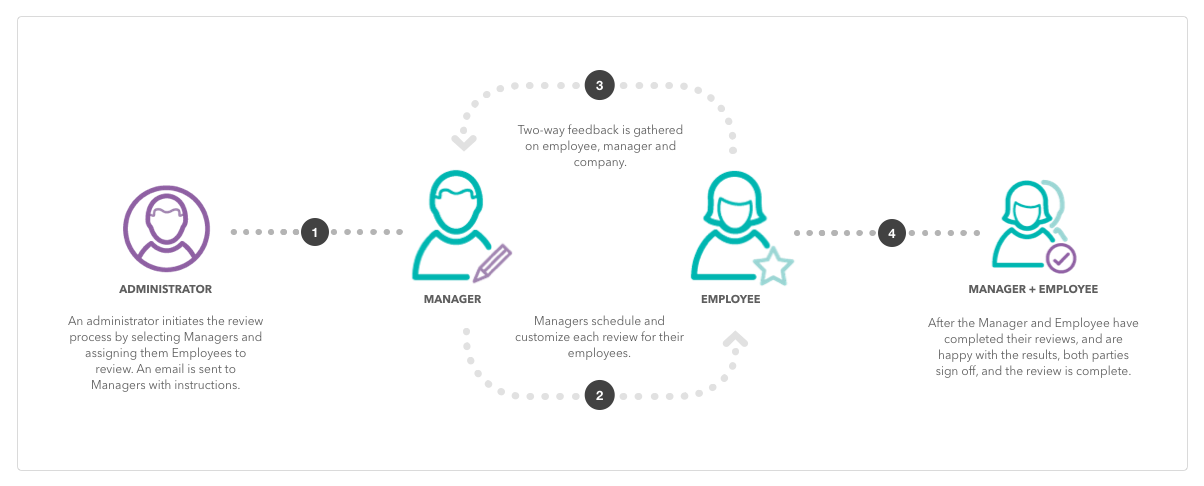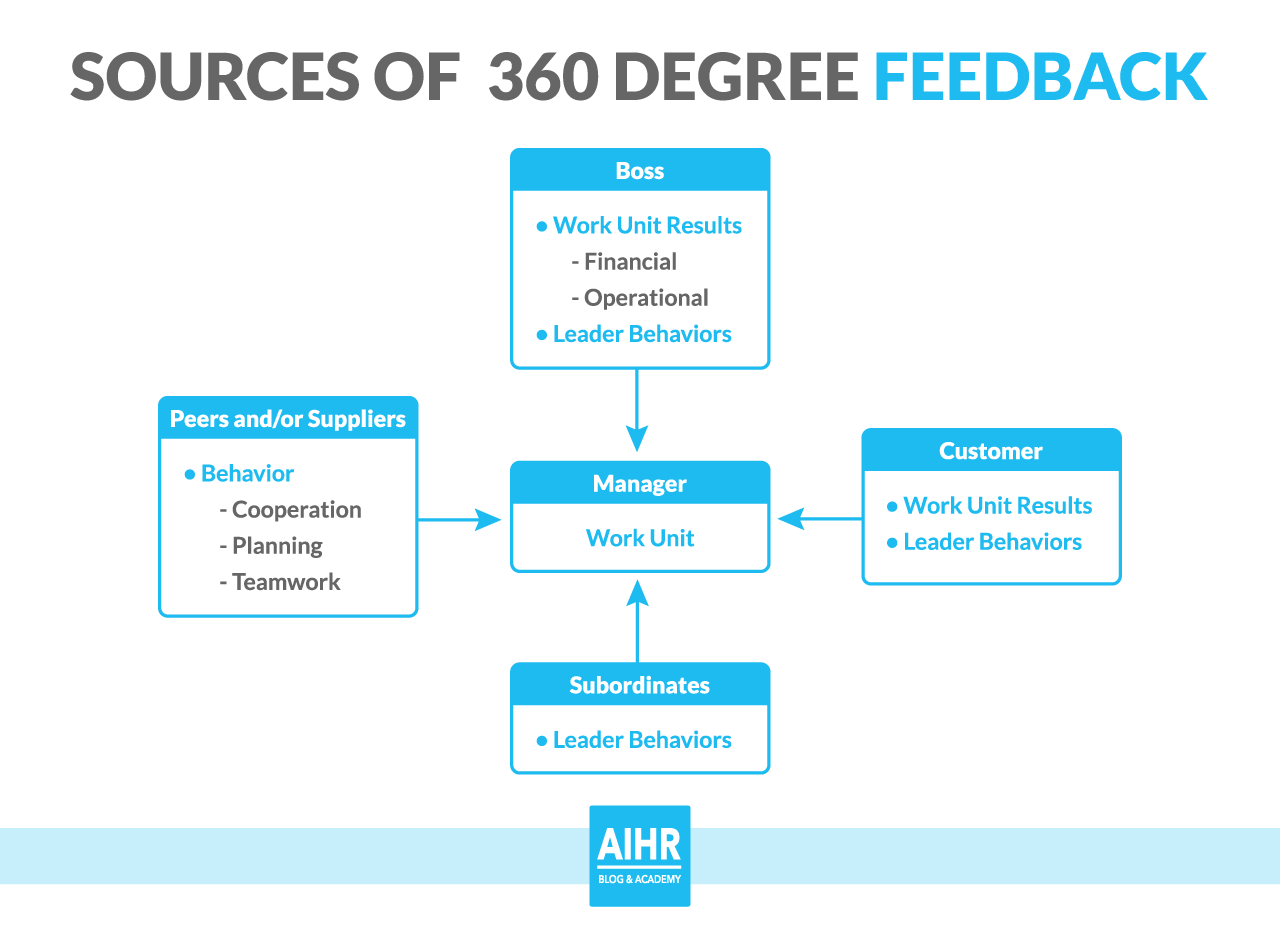It’s hard to run your company efficiently when you lack data to do it. Asking the team is a go-to measure, but employees aren’t necessarily honest about the negative aspects of their workplace. This is where the method of 360-Degree feedback comes in.
This feedback is collected anonymously from 8-12 people in anonymous work. According to the method, responders have to rate all the important aspects of their work process – the scope, organization, pay, team atmosphere, productivity, and other aspects.
How to prepare your employees for effective feedback
The problem is, you can’t get good feedback if the team isn’t prepared for similar surveys. If you want the form to be informative, it’s important to prepare employees beforehand. Here are five simple tips on how to do it.
Define your objectives
For many business owners, curiosity is the main driver of getting feedback and organizing surveys. Often, managers feel signs of a potential problem – employees aren’t transparent, work isn’t done in time, or the team fails to communicate altogether. Usually, these are times of crisis where feedback matters the most.

Under such pressing circumstances, it’s natural that many business owners can’t grasp the bigger picture. They don’t know where to start the questionnaire and end up with mixed reviews. To avoid that, you need to clearly structure your interview.
- What current issues do you see in your organizations – you need to define clearly what you think is wrong before comparing it with another opinion;
- How will you measure the results – how many responses do you want to collect, what’s the minimally acceptable rating, and which numbers clearly indicate the crisis;
- What issues are of the foremost importance: determine which aspects you would definitely like to discuss and which are secondary. Usually, this category combines questions on work organization, on-boarding, tasks, payment, communication – these are the causes of most team issues.
After you defined what you would like to discuss and which results you wouldn’t mind seeing on the form, it’s time to take the next step.
Communicate your purpose
Employees will seek answers to why they are tasked with a questionnaire in the first place. Make sure that the task isn’t lost among daily workload, but that the team members understand how important the process is for their personal and professional fulfillment. If you don’t make it personal for each participant, you will get formal, uninformative answers.
The entire point of the 360-Degree feedback is to get the full picture of your company’s situation. This means you need to be maximally transparent with your team members – explain the structure, purpose, and organization of the survey.
- Why is the survey held – if the company is dealing with problems, you could admit to some issues and directly request help;
- How will the process be held – you need to reassure employees that the process is anonymous and describe the procedure step by step;
- What will the review ask: discuss the topic of the feedback beforehand, so employees know in which direction they should think when asked to characterize the company.
Most importantly, talk about positive results. Employees should know that the results of the review will actually improve their workflow and personal efficiency.
State your expectations
Likely, the majority of your team members never took part in 360-Degree feedback. Some possibly had bad feedback experience, associated with anonymity breaches or time-consuming organization. Ask participants about their previous experiences and address concerns.

You should definitely let employees understand that the company and management are the ones who are being evaluated. You will not rank team members based on the result of a survey – they will be the ones to rate their management. If you put it like that, many employees will be enthusiastic about using the possibility to change the situation for the best.
If the 360-Degree feedback requires self-evaluation, you need to assure employees that the results of the survey won’t negatively affect their paychecks or workloads. You shouldn’t aim to use the information on the survey against the employees – it will ruin the transparency in the company.
Disclose anonymity or attribution
The main concern of all feedback participants, always, is anonymity. All team members should know who will analyze the feedback and how the anonymity will be achieved. Some companies prefer to make the entire process anonymous, whereas others ask managers to sign their responses.

After the survey is completed, you need to update the customers on the progress of data processing. Team members shouldn’t feel that the management forgot about their responses. Actually, it’s better to hold a meeting where you discuss changes – without disclosing the answers or their context.
Leave room for open discussion and questions
For the sake of measurability, it’s tempting to make all questions in the form of rating. Numeric answers are easier to process and analyze, but unfortunately, they can’t provide 360-picture. Even if you hire a professional to create the questionnaire (which is the best practice in 360-feedback), the expert won’t be able to capture all the nuance of your workplace.
By making 1-2 questions open, you leave your employees room for interpretation, and this is exactly what will provide you with out-of-the-box perspectives. Such answers should be typed – so there is no risk of identifying the author.
Bottom line
Your business can’t be separated from your team. The competences, values, and soft skills of your employees constitute the major part of the company’s success. To leverage on the strong sides of team members, you need to get their opinions first.
Conducting a 360-Degree evaluation is a perfect opportunity to let your employees voice their concerns and thoughts. Even the mere fact of carrying out such a survey makes your company look more transparent – which already improves the corporate atmosphere. Moreover, it will only work if you analyze the results and make actual changes.
Author Bio:
Alexey Kutsenko, Head of Digital Marketing at DDI Development Company Alexey develops UX and marketing strategy for various startups and enterprises. He knows marketing best practices, is passionate about User Experience, and watches current industry trends.
